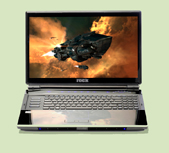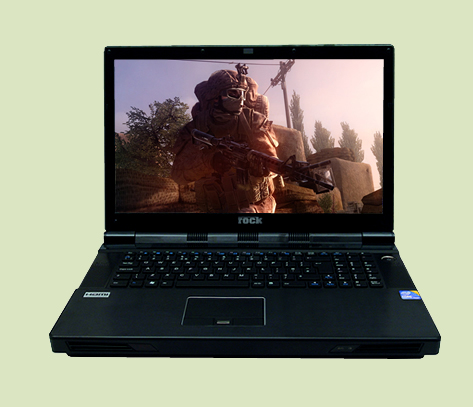Support / Jargon Buster G - I
A - C |
D - F |
G - I |
J - L |
M - O |
P - R |
S - U |
V - X |
Y - Z
Gateway: An access point connecting one network on the Internet with another neighbouring network. There are also payment gateways that offer direct access into a bank’s private network.
Gb: GIGABYTE. This is 1000 MegaBytes (Mb).
GIF (Graphical Interchange Format): A compressed graphics system used commonly on the Internet to reduce download times. They have the suffix .gif.
GPF: GENERAL PROTECTION FAULT. This happens when a piece of software crashes. In Windows 9x if a GPF occurs, a dialogue window pops up. If you click on Details, the information given may help in diagnose a problem. There are many reasons why this can happen. It can be low memory, a corrupt program, incompatible drivers or hardware problems
GSM: GLOBAL SYSTEMS for MOBILE communications. The digital system for mobile phone communications. GSM offers a higher rate of data transfer (9,600bps) than is available with analogue mobile phones (4,800bps)
GUI: GRAPHICAL USER INTERFACE. This is a system whereby a user can control a computer using mouse pointer, icons etc. Windows has a GUI.
HALF-DUPLEX: This is similar to Full Duplex, but instead of being able to send and receive data at the same time, with Half Duplex, you can either send or receive data, but not at the same time.
HANDSHAKING: A process by which two devices communicate. The best example would be with a Modem. When you dial to an ISP, you can probably hear all the noises that the modem makes. These are the hand shaking signals between the modem and the ISP.
HARD DISK: This is a data storage system engineered like a stack of record platters. The platters are made of glass or aluminium and coated with magnetic material on both sides. Magnetic read/write heads are mounted on an actuator that resembles a record needle pickup arm. A hard disk's capacity is measured in megabytes or gigabytes. The hard disk is your PC's C: drive. Large amounts of data can be written at very high speeds. The hard disk contains the PC’s operating system i.e. Windows 9x and the applications run on it. Hard disks are non-volatile storage media. This means that when you switch off your computer you will not lose any information, unlike volatile memory (such as RAM), which loses its contents when the computer is switched off. When you switch on the computer the operating system is loaded into the RAM.
HEAD CRASH: occurs when the read/write head assembly of a hard drive strikes the surface of the platter. Older hard drives had to be parked before transport to avoid this. Today's hard drives are less sensitive, but still should be handled with much care.
HEAT SINK: An aluminium radiator that dissipates heat. Fast CPU’s like the Pentium 4 have heatsinks and cooling fans to dissipate the heat more efficiently.
HIMEM.SYS: the DOS/Windows device driver that manages extended memory. It is one of the first configuration options that loads from the CONFIG.SYS.
HTML: HYPERTEXT MARKUP LANGUAGE. This is a scripting language that web pages are usually written in.
HTTP: HYPERTEXT TRANSFER PROTOCOL. This is the standard used to transmit data (specifically web pages) across the Internet.
HUB: This is a device, which connects computers together over a network. They usually use RJ45 cables.
Hyperlink: A connection linking different pieces of information on the web. Hyperlinks (or 'hot links') appear as hot spots on a web page, in the form of highlighted words or images. By clicking on the hyperlink, the reader can instantly jump to another part of your site or to a completely different website.
I/O ADDRESS: memory location for a particular device (disk drive, sound card, printer port, etc.). Two devices cannot share the same I/O address space
I/O: INPUT/OUTPUT. Input/Output refers to data transfer from input devices (keyboard, mouse, scanner, etc.) to output devices (printer, screen, etc.)
IEEE 1394: Also referred to as Firewire although this is in fact a term for Apple Macs. It is a high-speed serial protocol. Similar to SCSI but simpler to use and able to support transfer speeds of up to 200Mb/s. some claim up to 800Mb/s for the future. At the moment the main use for this port is for Digital video transfer from the digital video camera to the hard drive.
IIS (Internet Information Server): This is the Microsoft web server program. A version called PWS (personal web server) is included with Windows 98.
INTEL: Intel designed the CPU for the first PC, and has since developed most of the CPU’s used in PC’s today. They are responsible for all the Pentium class processors, and developed the MMX technology. Intel also designs the motherboard chipsets for Pentium processors.
INTELLIGENT BATTERY: This is the name given to a battery that is capable of telling you have much charge is left. The operating system, such as Windows XP will be able to give an approximation on how much life is left. Also referred to as a SMART battery.
INTERNAL/EXTERNAL RESOLUTION: Some notebooks can drive an external monitor at a higher graphics resolution than they can use on their own built in display panels. The quoted ‘internal’ resolution is the maximum resolution they can support via their display screen and the ‘external’ resolution is what they can support when used with an external monitor.
Internet: The Internet is a global network of computers with roughly 500 million users, all over the world. Anyone can join this network. From your computer you can send and receive information anywhere in the world - all at the cost of a local phone call, 24 hours a day. As people gradually learn more and more about how to use this technology, the Internet is transforming whole industries and creating new ones from scratch.
Intranet - An intranet is a 'private internet', not necessarily linked to the Internet itself, that can provide a powerful means of communication within a company or a group of trading partners. If it is linked to the larger Internet, it will be via secure 'firewalls' to protect your private information. An intranet can help a business, which has several different kinds of computer - Windows or DOS PCs, Macintosh computers, Unix workstations - which need to talk to one another. Internet standards are designed to allow different computers and network types to communicate, so an intranet can remove many potential technical headaches.
IO.SYS: A hidden DOS file that loads on boot with the MSDOS.SYS and the COMMAND.COM to provide basic I/O functions
IPX: Internet Packet eXchange is a Novell Netware communications protocol that handles routing of data packets from one node to another.
IRQ: INTERRUPT REQUEST. This is a function of the PC that allows devices to communicate directly with the CPU in a predefined sequence. Each hardware device that requires one is assigned an IRQ, then for a predefined length of time the CPU will access each IRQ line in turn, allowing the hardware device on that IRQ to talk to the CPU. There are 7 IRQ’s you can use although 4 or 5 of them are already assigned to Serial, Parallel, PS/2 or USB ports. Each Device has an IRQ it will normally use e.g. Parallel ports use 7, Serial ports use 4 and 3, etc. You should find that IRQ 9 and 11 are usually free. No two devices can share an IRQ. There are 16 IRQ’s in total. If your sound card stutters or your mouse freezes, an IRQ conflict is the likely cause.
ISDN (integrated services digital network): A fast phone line that significantly increases the rate at which you can transmit and receive information (either 64 or 128kbps), for example when connect to the Internet. If you have large files of data to transmit (such as video or high resolution photography) or you want to video and data conference regularly, you may want an ISDN line. Broadband connections are even faster than ISDN, and are beginning to supersede it).
ISP: INTERNET SERVICE PROVIDER. This is a company or organisation that provides a service to the Internet, be it web-hosting, dial up access (for users), etc
|


 Xtreme
Xtreme









